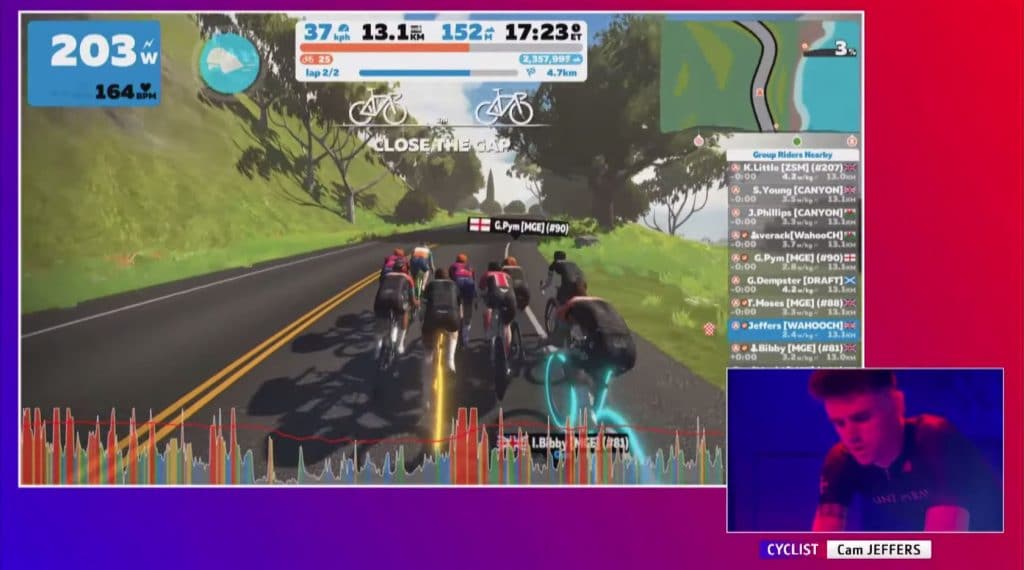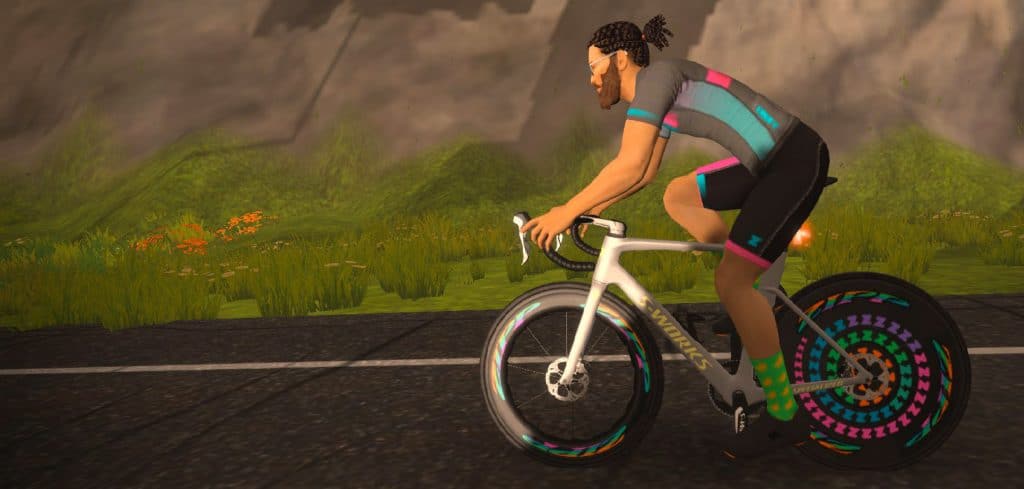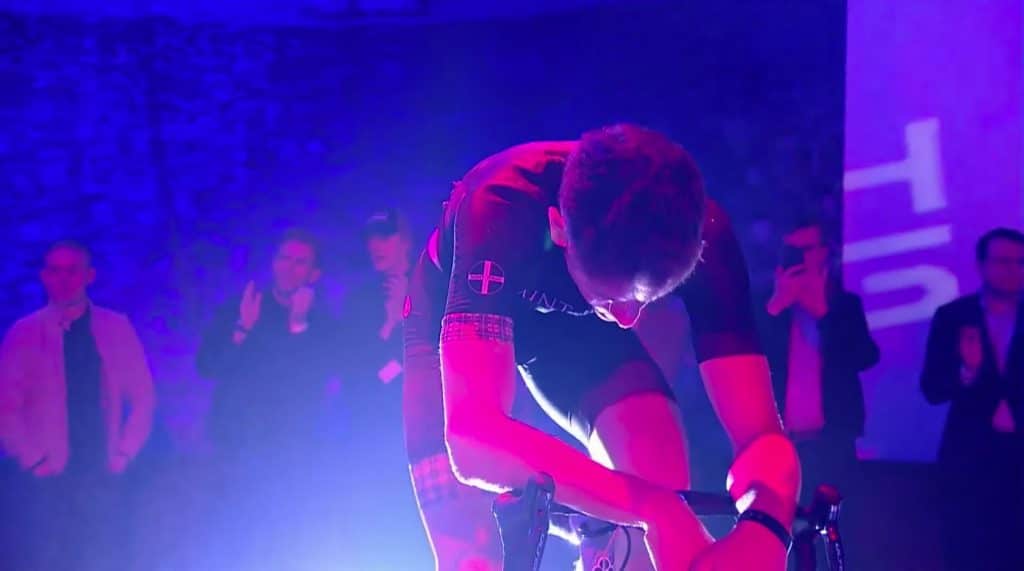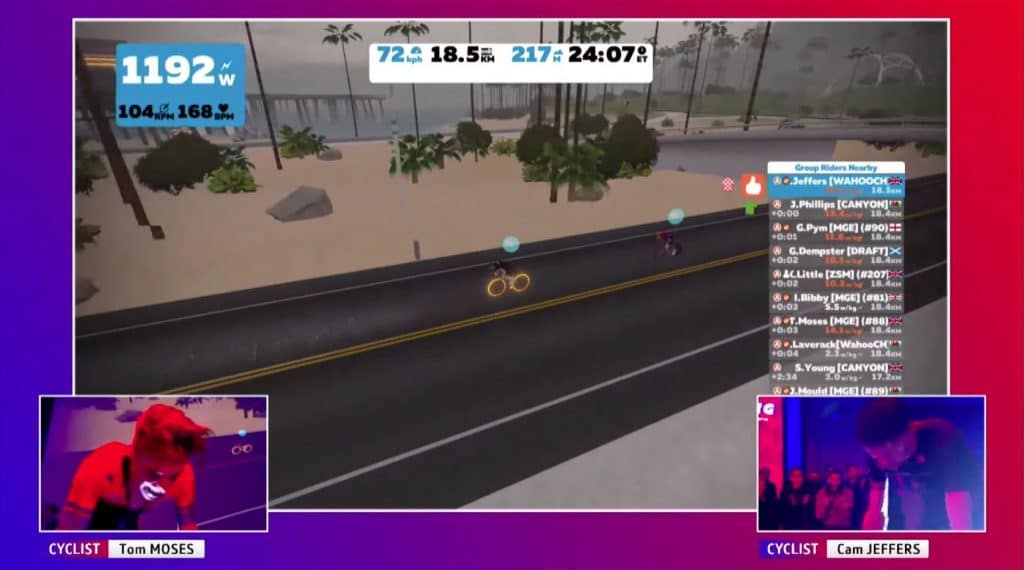The story of Cam Jeffers being disqualified and sanctioned has garnered a lot of attention in Zwift and the cycling community at large. And that’s not surprising: it’s the first time a governing body has sanctioned a rider for actions in Zwift, and it’s a hefty penalty which includes restriction from outdoor racing as well.
The controversy centers around the Tron bike which was obtained “illegally” by Jeffers using an ANT+ emulator. Jeffers then used that virtual bike in the British Cycling eRacing Championships, going on to win first place.
While no one disagrees that Jeffers’ use of an emulator is cheating, many are asking: what kind of advantage did the Tron bike give Jeffers? Or more to the point: did Jeffers win because of his unfairly-obtained Tron bike, or did he win because he was the most capable rider on the day?
A Short History of Fast Zwift Bikes
Before Zwift’s release of the Drop Shop in early 2019, the Tron bike was the undisputed king of Zwift racing. It wasn’t quite the fastest climber, but it was near the top, and significantly faster than other available road bike setups on flat roads and descents.
So the Tron bike developed a deserved reputation for being the best race bike.
But when the Drop Shop arrived, Zwift modified weight and aero values for frames and wheelsets and released several new frames and wheelsets. The Tron got heavier, making it a poor choice for long climbs. And today, at least three frames are as fast or faster than the Tron bike on flat or mixed courses when coupled with one of the disc wheelsets. Those fast frames are:
- Specialized Venge S-Works
- Cervelo S5
- Felt AR

Tested Time Gaps
The final race of the BC eRacing Championship was over two laps of Watopia Hilly Reverse. Here are our test lap times for actual bike setups used in the BC races, run at 300 watts steady (4 w/kg) for two laps:
- Tron (ridden by Ian Bibby and Cam Jeffers): 28:30
- Canyon Aeroad with 808/Disc (ridden by James Phillips, now the winner of the race): 28:32
- Cervelo S5 808s (ridden by Zwift veteran Kim Little, 3rd place in the final race): 28:36
- Zwift Aero with 808s (ridden by other members of Madison Genesis): 28:36

TT vs Peloton Times
It’s worth discussing the difference between lap times turned in by our solo rider test results, and the times you’ll see in an actual Zwift road race. Because they are very different beasts.
While our test times give you a pure look at which setups are fastest, there are much, much bigger factors determining who wins a Zwift race. Factors like:
- Rider power
- Rider weight/height
- Drafting abilities (conserving power)
- Intuition (knowing which attacks to follow and which to let go)
- Finishing sprint power
- Course knowledge
- Powerup assignments and usage
- Team tactics
- and more
Story Time
Here’s one example of how course knowledge and powerup assignments factor into races: in a recent race on the new Yorkshire course, I was in a chasing group which had been consistently 10-15 seconds behind the lead group for miles. But in one well-timed 45-second push, I was able to pull my group back to the lead bunch.
How did I do it? A well-timed aero powerup as we hit the twisty Pot Bank descent, then keeping the power up when we hit the slight incline afterward.
I could have put out that same power anywhere else on course with little effect. But I knew the course, had a useful powerup, and went hard at the right time. And I wasn’t even riding the Tron bike!
Conclusion: riding a virtual bike that tests a few seconds slower or faster than the competition makes no noticeable difference in a typical draft-enabled Zwift race.
Why Jeffers Won
It’s clear from the times above that, while the Tron bike didn’t hurt Jeffers at all, it’s also not the reason he won. He knew the race courses, had good legs, and rode smart.

Opinion: Race Equipment Standardization
As a result of “Jeffersgate” I’ve seen many calls for standardized equipment in these big races: that is, make every rider use the same virtual bike and wheels so there is no advantage based on equipment.
While I understand where those calls are coming from, I can’t help but think that, if eRacing is going to be its own discipline, it needs to reward those who embrace it.
If a rider doesn’t want to put in the effort to unlock a faster bike, or even understand which bikes are faster, they need to realize they’ll have a slight disadvantage compared to those who have worked to unlock faster bikes and understand the game.
This is analogous to what happens in outdoor racing: riders who invest more time and money into their equipment rightly expect to gain some advantage over those who invest less. It’s how cycling (and sports, and life) work!
And it’s just one more way Zwift is trying to ensure that race results aren’t all about power. If racing on Zwift is going to be interesting to viewers it must include elements of strategy, even randomness (Lightweight Meilenstein wheels, anyone?), as well as pure athleticism.

Share Your Thoughts
I’ve shared the test results and given my opinion. Now it’s your turn!